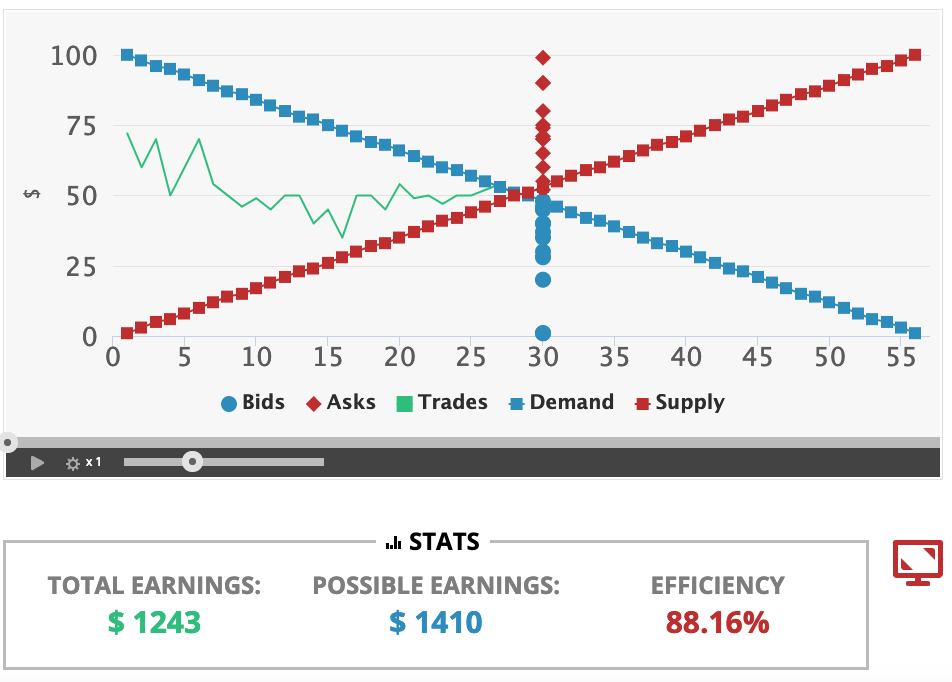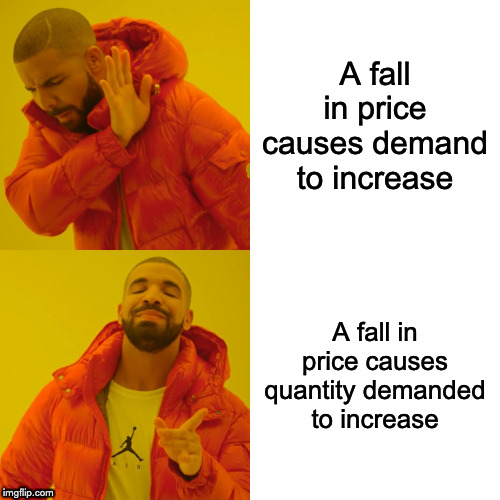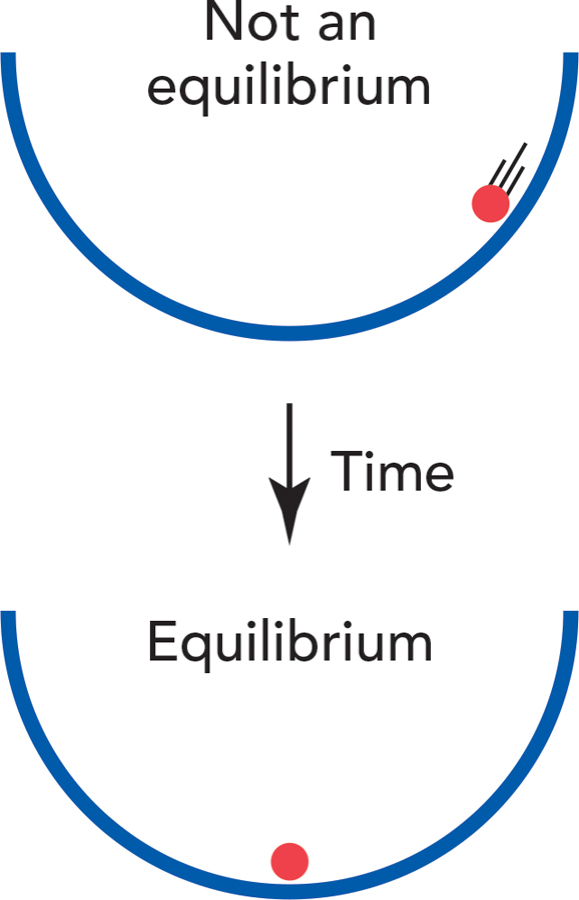3.1 — The Supply and Demand Model
ECON 306 • Microeconomic Analysis • Spring 2022
Ryan Safner
Assistant Professor of Economics
safner@hood.edu
ryansafner/microS22
microS22.classes.ryansafner.com
Equilibrium
Recall: 2 Major Models of Economics as a “Science”
Optimization
Agents have objectives they value
Agents face constraints
Make tradeoffs to maximize objectives within constraints

Recall: 2 Major Models of Economics as a “Science”
Optimization
Agents have objectives they value
Agents face constraints
Make tradeoffs to maximize objectives within constraints

Equilibrium
Agents compete with others over scarce resources
Agents adjust behaviors based on prices
Stable outcomes when adjustments stop

Recall: Optimization and Equilibrium
If people can learn and change their behavior, they will always switch to a higher-valued option
If there are no alternatives that are better, people are at an optimum
If everyone is at an optimum, the system is in equilibrium


Equilibrium Analysis & Price Theory
Where do prices come from?
How do they change?
How consumers and producers to respond to changes?
What predictions can we make about what we will see in the world?

Equilibrium Analysis
An equilibrium is an allocation of resources such that no individual has an incentive to alter their behavior
In markets: “market-clearing” prices where quantity supplied equals quantity demanded

Partial Equilibrium Analysis
We will only look at “partial equilibrium” for a single market
Changes in one market often affect other markets, affecting the “general equilibrium”
- Example: change in price of corn will affect the market for wheat, soybeans, flax, cereal, sugar, candy, ethanol, gasoline, automobiles, etc...
- think of all of the complements, substitutes, upstream and downstream goods in production...
- General equilibrium is too complicated for undergraduate courses...

Recall: Demand
Demand Function
- Demand function relates quantity to price
Example: q=10−p
- Not graphable (wrong axes)!

Inverse Demand Function
- Inverse demand function relates price to quantity
- Take demand function and solve for p
Example: p=10−q
- Graphable (price on vertical axis)!
Inverse Demand Function
- Inverse demand function relates price to quantity
- Take demand function and solve for p
Example: p=10−q
- Vertical intercept ("Choke price"): price where qD=0 ($10), just high enough to discourage any purchases

Inverse Demand Function
Read two ways:
Horizontally: at any given price, how many units person wants to buy
Vertically: at any given quantity, the maximum willingness to pay (WTP) for that quantity
- This way will be very useful later

Recall: Supply
Supply Function
- Supply function relates quantity to price
Example: q=2p−8
- Not graphable (wrong axes)!

Inverse Supply Function
- Inverse supply function relates price to quantity
- Take supply function, solve for p
Example: p=4+0.5q
- Graphable (price on vertical axis)!
Inverse Supply Function
- Inverse supply function relates price to quantity
- Take supply function, solve for p
Example: p=4+0.5q
- Graphable (price on vertical axis)!

Inverse Supply Function
Example: p=4+0.5q
Slope: 0.5
Vertical intercept called the "Choke price": price where qS=0 ($4), just low enough to discourage any sales

Inverse Supply Function
Read two ways:
Horizontally: at any given price, how many units firm wants to sell
Vertically: at any given quantity, the minimum willingness to accept (WTA) for that quantity

Market Equilibrium
Market Equilibrium
Market-clearing (equilibrium) price (p⋆): $6.00
Market-clearing (equilibrium) quantity exchanged (q⋆): 4 units

Why Markets Tend to Equilibrate
Excess Demand I
Example: Consider any price below $6, such as $5:
Qd=5Qs=2
Qd>Qs: excess demand
A shortage of 3 units

Excess Demand II
Example: Consider any price below $6, such as $5:
Qd=5Qs=2
Qd>Qs: excess demand
A shortage of 3 units
Sellers will not supply more than 2 units
For 2 units, some buyers are willing to pay more than $5

Excess Demand II

Excess Demand III
Example: Consider any price below $6, such as $5:
Qd=5Qs=2
Qd>Qs: excess demand
A shortage of 3 units
Buyers will raise their bids against one another, raising the price
At higher prices, sellers willing to sell more!
Until equilibrium, no pressure for change, Qd=Qs

Excess Supply I
Example: Consider any price above $6, such as $7:
Qd=2Qs=8
Qd<Qs: excess supply
A surplus of 6 units

Excess Supply II
Example: Consider any price above $6, such as $7:
Qd=2Qs=8
Qd<Qs: excess supply
A surplus of 6 units
Buyers will not buy more than 2 units
For 2 units, some sellers willing to accept less than $8

Excess Supply II

Excess Supply III
Example: Consider any price above $6, such as $7:
Qd=2Qs=8
Qd<Qs: excess supply
A surplus of 6 units
Sellers will lower their asking prices against one another, lowering the price
At lower prices, buyers willing to buy more!
Until equilibrium, no pressure for change, Qd=Qs

Why Markets Tend to Equilibrate

Comparative Statics
Ceterus Paribus I
Supply function and demand function only relate quantity (supplied or demanded) to price
- Describes how buyers/sellers respond to changes in market price
Certainly there are many other factors that influence how much a buyer or seller will purchase at a particular price!
- income, preferences, prices of other goods, costs, expectations, etc.
A supply or demand function (or graph) requires “ceterus paribus” (all else equal)

Recall (for example), Demand I
- A consumer's demand (for good x) depends on current prices & income:
qDx=qDx(m,px,py)
- How does demand for x change?
- Income effects (ΔqDxΔm): how qDx changes with changes in income
- Cross-price effects (ΔqDxΔpy): how qDx changes with changes in prices of other goods (e.g. y)
- (Own) Price effects (ΔqDxΔpx): how qDx changes with changes in price (of x)

See Class 1.5 for a reminder.
Recall (for example), Demand II
A change in one of the "determinants of demand" will shift demand curve!
- Change in income m
- Change in price of other goods py (substitutes or complements)
- Change in preferences or expectations about good x
- Change in number of buyers
Shows up in (inverse) demand function by a change in intercept (choke price)!
Again, see my Visualizing Demand Shifters

Ceterus Paribus II
Consider our demand function: qD=10−p
If the market price changes (perhaps because supply changes), that results in a change in quantity demanded
- We move along the existing demand curve
Ceterus paribus has not been violated

Ceterus Paribus III
Consider our demand function: qD=10−p
If the something other than price changes (income, preferences, price of a complement, etc), that results in a change in demand
- A whole new demand function/graph:
qD=12−p
- Ceterus paribus has been violated

Ceterus Paribus IV
- There is a big difference between a change in "quantity demanded" and a change in "demand"!
Ceterus Paribus IV
- There is a big difference between a change in "quantity demanded" and a change in "demand"!

Increase in Demand

Increase in Demand
More individuals want to buy more of the good at every price
Entire demand curve shifts to the right

Increase in Demand
More individuals want to buy more of the good at every price
Entire demand curve shifts to the right
At the original market price, a shortage! (qD>qS)

Increase in Demand
More individuals want to buy more of the good at every price
Entire demand curve shifts to the right
At the original market price, a shortage! (qD>qS)
Some buyers willing to pay more at this quantity

Increase in Demand
More individuals want to buy more of the good at every price
Entire demand curve shifts to the right
At the original market price, a shortage! (qD>qS)
Some buyers willing to pay more at this quantity
Buyers raise bids, inducing sellers to sell more
Reach new equilibrium with:
- higher market-clearing price
- larger market-clearing quantity exchanged

Decrease in Demand

Decrease in Demand
Fewer individuals want to buy less of the good at every price
Entire demand curve shifts to the left

Decrease in Demand
Fewer individuals want to buy less of the good at every price
Entire demand curve shifts to the left
At the original market price, a surplus! (qD<qS)

Decrease in Demand
Fewer individuals want to buy less of the good at every price
Entire demand curve shifts to the left
At the original market price, a surplus! (qD<qS)
Some sellers willing to accept less at this quantity

Decrease in Demand
Fewer individuals want to buy less of the good at every price
Entire demand curve shifts to the left
At the original market price, a surplus! (qD<qS)
Some sellers willing to accept less at this quantity
Sellers lower asks, inducing buyers to buy more
Reach new equilibrium with:
- lower market-clearing price
- smaller market-clearing quantity exchanged

Increase in Supply

Increase in Supply
More individuals want to sell more of the good at every price
Entire supply curve shifts to the right

Increase in Supply
More individuals want to sell more of the good at every price
Entire supply curve shifts to the right
At the original market price, a surplus! (qD<qS)

Increase in Supply
More individuals want to sell more of the good at every price
Entire supply curve shifts to the right
At the original market price, a surplus! (qD<qS)
Some sellers willing to accept less at this quantity

Increase in Supply
More individuals want to sell more of the good at every price
Entire supply curve shifts to the right
At the original market price, a surplus! (qD<qS)
Some sellers willing to accept less at this quantity
Sellers lower asks, inducing buyers to buy more
Reach new equilibrium with:
- lower market-clearing price
- larger market-clearing quantity exchanged

Decrease in Supply

Decrease in Supply
Fewer individuals want to sell less of the good at every price
Entire supply curve shifts to the left

Decrease in Supply
Fewer individuals want to sell less of the good at every price
Entire supply curve shifts to the left
At the original market price, a shortage! (qD>qS)

Decrease in Supply
Fewer individuals want to sell less of the good at every price
Entire supply curve shifts to the left
At the original market price, a shortage! (qD>qS)
Some buyers willing to pay more at this quantity

Decrease in Supply
Fewer individuals want to sell less of the good at every price
Entire supply curve shifts to the left
At the original market price, a shortage! (qD>qS)
Some buyers willing to pay more at this quantity
Buyers raise bids, inducing sellers to sell more
Reach new equilibrium with:
- higher market-clearing price
- smaller market-clearing quantity exchanged

Equilibrium Tendencies


Equilibrium is a tendency we can predict with our models
Buyers and sellers raise and lower their bids and asks to adjust to competition from other buyers and sellers, moving the market price
Ceterus paribus, market prices will settle on an equilibrium given existing conditions
But conditions are always changing (and so are prices)!